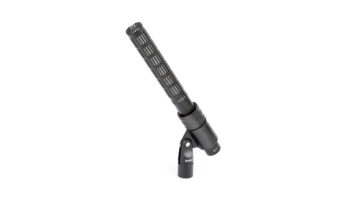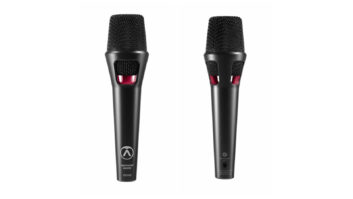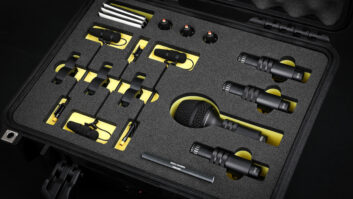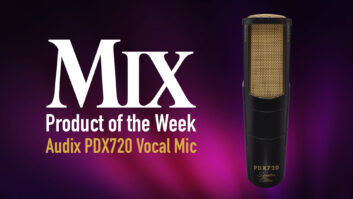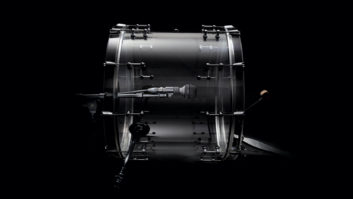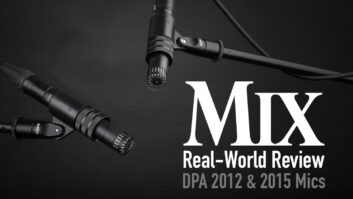DPA Microphones has a well-deserved reputation for manufacturing high-quality condenser microphones that produce great sound. The company’s 4006 omnidirectional microphone has a lineage dating back to the 1950s, when DPA’s predecessor, Brüel & Kjær, developed some of the earliest measurement microphones.
Several years ago, DPA introduced the d:facto 4018 VL, a premium-quality vocal microphone for on-stage use. There’s no debating the sonic attributes of the 4018 VL, but its price point (just north of $1,000) is a bit steep for some users. DPA’ s goal in creating the 2028 was to build a vocal microphone that brings the sonic qualities of the 4018 VL down to a more accessible price point. Whereas the 4018 VL offers a choice of removable capsules with linear response or high-frequency boost, the 2028 features a fixed capsule—which shouldn’t be a big deal for most users.
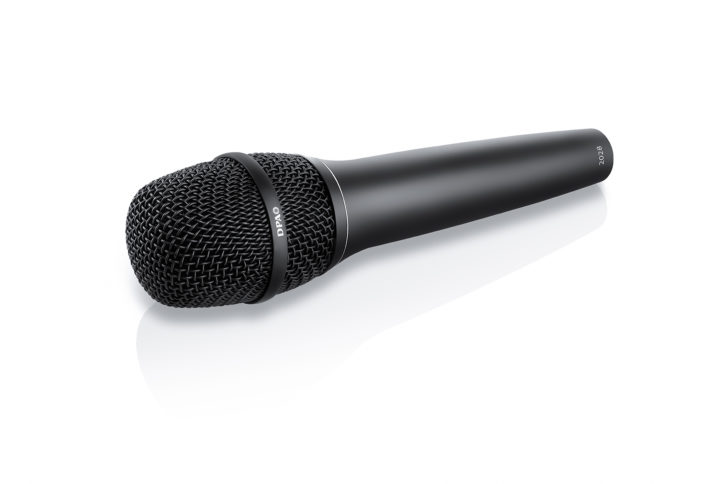
The Inner Workings
The 2028 is a supercardioid condenser microphone with a newly developed, pre-polarized, pressure-gradient capsule. It was designed for high gain-before-feedback, and to exhibit an off-axis response that remains consistent with that of the on-axis response.
A great amount of care was taken by DPA’s engineering department in determining the spacing between the capsule and the front of the outer metal grille to ensure that a vocalist can get on the grille without worry of plosive sounds becoming an issue.
Stated specs for the 2028 include a frequency response of 100 Hz to 16 kHz ±2 dB, dynamic range of 117 dB, and a maximum SPL of 160 dB—which should be more than enough to cover most mortal singers. An integral low-cut filter is applied at 80 Hz to help control proximity effect, as well as to reduce pickup of low-frequency noise from the surroundings. The 2028 runs on 48 VDC phantom power ±4 volts, though the manual indicates that it will work with phantom supplies of lower voltages with somewhat reduced performance.
The microphone is packaged with a soft bag, zippered soft-shell case, and a clip. It is available in a wired version as well as wireless versions, employing an SL1 adapter for use with Shure, Sony and Lectrosonics equipment, or an SE2 adapter for use with Sennheiser wireless equipment. DPA sent Mix the wired version for this review.
The 2028 features a new three-stage pop filter made up of an outer steel grille, a foam windscreen underneath that, and an internal metal screen that is very nicely made (yes, I took it apart). These pieces can be removed easily for gentle cleaning when necessary. Beneath the metal screen lives the capsule, set in a shock mount to reduce handling noise and damage from impact.
The 2028 package is very well done. I especially liked the zippered softshell case, which has a well-padded foam interior with cutouts for the microphone and the clip. If you’re worried about space, you can instead use the soft bag. The 2028 has a solid feel and balances well in your hand. Its black satin finish looks good on stage but doesn’t distract from the performer.
Trying It Out on the Road
I used the DPA 2028 for a variety of singers on loud stages and in intimate settings with equally successful results. When I first put up the 2028, I thought, “Wow, it sounds like my singer has a cold.” That was because he did, in fact, have a cold! (I hadn’t spoken with him before soundcheck). A slight cut in the vicinity of 300 Hz and a bit of a boost around 4.5 kHz helped restore his voice to a more normal tone.
The following week when I worked with him—sans cold—I noticed right away how smooth its response was. I could easily push the lead voice to the front of a busy mix without need for much, if any, EQ. I live with “P.A. du jour” and sometimes run into systems that can sound harsh in the upper-mids (2 kHz to 5 kHz). The 2028 wasn’t bothered by these systems, instead presenting the vocal with clarity and articulation while never sounding strident. At the end of the show the vocalist commented that the 2028 provided detail and presence in his in-ear mix, and we were both happy with the results.
Like most directional microphones the 2028 exhibits proximity effect, though it is well-controlled. It becomes apparent at a distance about six inches from the mouth and becomes stronger as the singer gets closer to the grille. When a singer is on the grille, the proximity effect provides a low-mid warmth that can be flattering on thin vocals but could be a bit much for a vocalist whose voice already has a lot of low end. At least one of the singers who tried the 2028 preferred the sound of the mic when they were about 10 inches away from the grille, and (for this particular singer) I agreed that this position sounded the most natural.
I also used the 2028 on a singer/songwriter with whom I’m very familiar, having done tons of gigs with him over the years. He performs mostly in small venues and accompanies himself with an acoustic guitar. One of the ongoing problems we’ve had is that his vocal microphone (and we’ve tried quite a few) inevitably picks up a ton of leakage from the acoustic guitar, creating phase problems when the guitar is brought into the mix.
I was cautiously optimistic in putting up the 2028 and wasn’t disappointed. In fact, I was shocked at how well the 2028 rejected his guitar—it was barely audible in the vocal mic, a testament to the mic’s off-axis rejection. This characteristic also helped keep monitor leakage from entering the microphone, even when we weren’t able to position the monitor precisely in one of the null points of the supercardioid pattern.
One of DPA’s goals in creating the 2028 was to provide a smooth off-axis frequency response, and the company has definitely succeeded in that department. When the mic is moved off-axis from a vocal, the timbre remains very consistent within about ±40 degrees. The sound starts to thin out at around 45 to 60 degrees off-axis, but until that point, changes in volume are more apparent than changes in timbre.
High Gain, Excellent Rejection
When used on a loud stage the 2028’s gain-before-feedback was higher than average compared to one popular handheld dynamic vocal mic, and about equal to that of another—but it’s worth noting that Mic #2 lacked the low-mid presence provided by the 2028. Handling noise was a non-issue, and the 2028’s three-stage pop filter did a great job of controlling plosives. If I solo’d the vocal channel in my cans, I could hear some leakage from the wedge monitors into the 2028 but it was mostly low-mids and was way down in level. I also noticed that leakage from the drums and guitar amplifiers was minimal, so raising the level of the vocal in the mix didn’t change the levels of other instruments.
Used on a singer who has what I would call a smoky voice with a muted high end, the 2028 showed its ability to take EQ. At one particular show where I needed the vocal to be brighter, I was able to push a shelf EQ to +7 or 8 dB at around 4 kHz, which put the singer in front of the mix while avoiding peaky-ness.
If there’s one word to describe the DPA2028 it would be smooth. Unlike some condenser microphones designed for use on stage, the 2028 never exhibited any harshness yet still managed to keep vocals on top of the mix. When compared to some popular dynamic vocal mics, I found that the 2028 was consistent across the frequency range whereas one of those dynamics had too much zip up top and was lacking low frequencies, and the other mic had the opposite personality.
By comparison, the 2028 was rich-sounding, with an extended frequency response at both extremes but not in a hyped “hi-fi” manner. Most impressive was the amount of rejection that the 2028 provided against the acoustic guitar—I don’t think I’ve used another microphone that provided as much rejection as the 2028 did in that situation.
The DPA 2028 may be more expensive than other handheld vocal mics designed for live use, but it’s worth every penny.
PRODUCT SUMMARY
- Company: DPA Microphones
- Product: 2028 Vocal Microphone
- Website: www.dpamicrophones.com
- Price: $699.95
- Pros: Beautifully constructed; smooth sound; excellent rejection; available in versions for a variety of wireless systems
- Cons: Expensive compared to run-of-the-mill mics for live vocals

